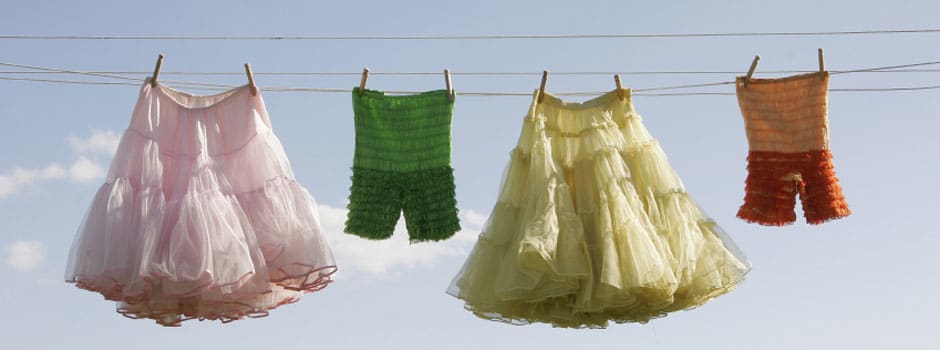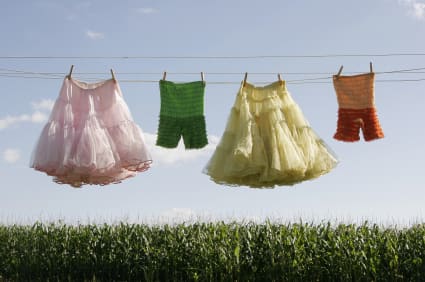For Cleaner Clothes, Break These 7 Bad Habits
Break these 7 bad habits for cleaner clothes with longer lifespans.
 Credit:
Credit:
Recommendations are independently chosen by Reviewed's editors. Purchases made through the links below may earn us and our publishing partners a commission.
If you're like most Americans, your knowledge of washers and dryers is part of a great oral history tradition, passed down through the generations. Unfortunately, some of those hints you learned while doing chores as a kid might be damaging the expensive clothes you wear now that you've grown up. While Grandma may have had no trouble with the wringer on her White-Westinghouse, chances are that your washer works differently. Here are seven ways to break bad laundry habits that are keeping your clothes dirty, or prematurely wearing them out.
Don't Wash That Stain In Hot Water!
Not all stains are created equal. Protein-based stains, such as sweat, blood and most food stains, require a cold rinse in order to ensure they don't set. If you've spilled nacho dip and sour cream on your favorite sweater, setting your washer to its hottest temperature setting will just bake that cheese into a sweater quesadilla.

To Bleach Or Not To Bleach? Check The Cycle
We won't wade into the argument about when it's appropriate to use bleach—that's for another article. But you should know that the Whites or Cottons cycles on most washers are designed to work with bleach, adding an extra rinse at the end of a wash to get the chlorine smell out of your clothes. If you wash your whites without bleach, you're just wasting water on a useless extra rinse. If you add bleach to a normal cycle, you might end up smelling like you just got out of the pool.
Don't Over-Soap

Does your washer have the "high efficiency" logo on it? Make sure to read the manual and buy the proper kind of laundry detergent. High efficiency detergents are concentrated—usually either 2x or 4x—so you don't need to add as much soap as you would with a conventional washer. Follow the instructions on your bottle of laundry detergent and only put in the exact amount it recommends. You'll save money on detergent, and your clothes won't end up with excess soap in them. If you own one of the rare washers that dispenses soap automatically, make sure you've set the control panel for the right kind of detergent.
Lend a Hand to Bulky Loads
Ever notice that bulky items like king size sheets, comforters, and towels tend to bunch up in the dryer, emerging with a knotted-up damp spot in the center of a giant laundry-cruller? That's because bulky loads need space to move around. But no household dryer is big enough to tumble an entire comforter inside out. So give your dryer a hand (or two), open up the door about halfway through the cycle and untangle your heavy-duty loads. It's a little extra work, but it'll shorten the time your largest items spend in the dryer.
Consider Damp-Drying Delicates
If you live somewhere where you can air-dry your laundry, consider using your clothes dryer only to get the initial bulk of water out of a load. The stress of high heat and constant tumbling can cause delicate items to shrink and wear prematurely, so it's best to minimize the time that those items spend in a dryer. Many dryers contain a "damp dry" option that automatically stops a cycle when clothes are dry enough to hang on a line. Or you could just remove your delicate articles mid-cycle. Those few minutes spent tumbling will help to reduce musty smells and wrinkles.

Check Your Vents And Hoses
This one should be a no-brainer, but a dryer with clogged vents will have to work harder to get your clothes dry, and it will also put you at increased risk for a house fire. Old hoses on a washer may burst, leaving you with a flooded laundry room. Always empty your lint trap, check your dryer vent hose for lint buildup, and replace your hoses every five years.
Read The Darn Manual!
For washers and dryers alike, automatic cycles go by different names across different brands. "Regular" on one brand may be "Normal" on another and "Permanent Press" on a third. Most washers and dryers come with an owner's manual that contains a chart explaining which cycles are best for different kinds of loads, which is especially helpful for higher-end machines that feature obscure washes like "Beach Towels" and "Pet Beds." If you've lost manual, check online: Most manufacturers make them available for free download.
Share your smart, practical laundry tips in the comments section below!

